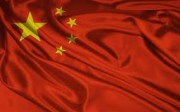Ethiopia’s Membership Of BRICS: Consequences and Prospects
Ethiopia’s upcoming presence in BRICS contains significant trade and export manufacturing demographic potential
By Farzad Ramezani Bonesh
Ethiopia was one of the surprise additions in the BRICS grouping, which has been derided in the West as a disparate group with limited compatibility. However, a deeper dive into new members attributes reveal a longer term view with Ethiopia a logical extension to the Eurasian INSTC and being in possession of a significant regional free trade agreement. We examine Ethiopia’s accession to BRICS – including the challenges and potential.
Ethiopia’s BRICS Membership Process
After holding dozens of successful meetings and summits in the last decade, increasing the economic status and leading trade capabilities of BRICS, Ethiopia’s interest in accompanying or participating in BRICS Plus has increased. Addis Ababa participated in BRICS meetings and summits in 2022 and 2023, hosted by China and South Africa. According to the Ethiopian Foreign Ministry, the country officially applied to join the BRICS group in early 2023.
Addis Ababa’s good relations with major BRICS members, large population, history, high growth rate, overall GDP growth, and favorable development prospects make Ethiopia a challenging, yet future development play within the group and has cemented BRICS position within North-East Africa. This has additional implications for the Middle East and a future expansion of the INSTC network into Africa. Saudi Arabia, itself a new BRICS economy, is just across the Red Sea with the Port of Jeddah readily available. New Saudi rapprochement with Iran will eventually see the development of the INSTC transport network into North and East Africa as it continues to add connecting routes.
The 15th BRICS summit invited Ethiopia to become a full member of BRICS from January 1, 2024.
An Introduction to Ethiopia

Ethiopia is the second-most populous country in Africa and its sixth largest economy. It is also a member of the Common Market For East & South Africa (COMESA), which also includes Burundi, Comoros, the DR Congo, Djibouti, Egypt, Eswatini, Kenya, Libya, Madagascar, Malawi, Mauritius, Rwanda, Seychelles, Somalia, Sudan, Tunisia, Uganda, Zambia and Zimbabwe.
Ethiopia is also a member of the African Continental Free Trade Agreement (AfCFTA) which includes all African nations (with the exception of Eritrea). This agreement is phasing in reductions on all intra-African trade on 95% of all products in various stages over the coming 12 years. This eliminates tariffs for pan-African sourcing, and when combined with manufacturing in Ethiopian free trade zones significantly enhances Ethiopia’s potential as an export manufacturing driven economy.
COMESA’s population is about 640 million, while its total GDP (PPP) is about US$918 billion. The average GDP per capita (PPP) varies amongst members but averages out at US$5,173.

Ethiopia & BRICS: Implications and Opportunities
Ethiopia, with a population of 123 million people, is landlocked in the Horn of Africa. Ethiopia’s economy has experienced strong growth over the past 15 years averaging about 10% per annum.
Meanwhile, its economy has been one of the fastest growing in the world, with a 2023 anticipated GDP growth rate of 7.5%, a GDP (PPP) of US$290 billion and a per capita GDP (PPP) of US$2,519.
The government has been able to reduce the inflation rate and the ratio of debt relative to the GDP.
Ethiopia will be considered as an official member of BRICS from January 2024, with the Ethiopian Prime Minister Abiy Ahmed describing this as a “great moment” for the country.
For Addis Ababa, membership in BRICS is a significant geo-economic, geo-political, and diplomatic victory. With about 26% of the area, and about 42% of the world’s population, BRICS has an increasing role in global geopolitics and trade.
Together with an increase in production and exports since the end of the COVID pandemic, increases in exports, marred by the Ukraine conflict interrupting Ethiopian barley and wheat imports, combined with a 50% reduction in imported rice in the agricultural sector, BRICS membership empowers Ethiopia to deal with severe food insecurity in the country.
The use of advanced agricultural technologies and knowledge from BRICS countries can also be useful in modernizing the country’s agricultural sector, with Russian grain and fertilizers poised to assist.
Ethiopia has seen continued privatization, increased exports, increased remittances, and increased foreign direct investment. However, Ethiopia alone cannot achieve its ambitious goals of building more than 100 dams in different regions, and become Africa’s largest electricity power, unless it can benefit from the support of major actors such as BRICS.
Addis Ababa is also trying to attract international and regional investors to energy projects.
According to the approach of the BRICS New Development Bank (NDB), Ethiopia’s future participation will lead to the bank’s financial and technical assistance and the granting of soft loans without the more stringent conditions typically imposed by the IMF.
Considering Ethiopia’s limited foreign reserves and foreign currency inflows, budgeting for sustainable development goals, is supposed to be compensated through obtaining foreign loans. Therefore, the presence in BRICS can be an opportunity for the development of trade with emerging economies, faster economic growth, opening new markets, signing new trade agreements, and foreign direct investment (FDI) for Addis Ababa.
Given Ethiopia’s growth model based on infrastructure investment, public investment by BRICS members will stimulate economic growth in 2027-24. By membership in BRICS, Ethiopia wants to increase trade with domestic, on-US Dollar currencies, minimize costs, and develop e-commerce.
BRICS can practically contribute to the government’s 10-year development plan for domestic economic reforms and help Ethiopia create a more inclusive and sustainable growth path.
The positive effects of BRICS membership can help Ethiopia benefit from the experience of the BRICS members in economic reforms, increase the volume of production, stimulate Ethiopian exports, create macro-economic changes, and provide access to a completely healthy economy.
It should be noted that China’s trade with BRICS is relatively well balanced, unlike the trade deficits it runs elsewhere – and especially with the West. In the 7M 2023, China’s exports grew 23.9% year on year to ¥1.23 trillion, (US$168.6 billion) while imports rose 14.3% from a year ago to ¥1.15 trillion (US$157.6 billion). The figures illustrate a remarkable balance between BRICS imports and exports with China.
BRICS assistance in achieving Ethiopia’s development goals and prospects, improving and increasing tourists from the main and new BRICS countries will be part of other effects of joining BRICS.
The official joining of Ethiopia to the BRICS group will increase the position of the country’s economic power in the Horn of Africa and accelerate the implementation of the 2063 African Development Agenda as well as the goals of the African Continental Free Trade Agreement (AfCFTA).
Given its uneasy relationship with Western powers, joining BRICS makes Ethiopia geo-strategically important, increasing its international bargaining power, South-South cooperation and multilateralism, and its ambition to become a major player. It will also help reshape the economy of Africa.
BRICS membership can assist in overcoming Ethiopia’s domestic issues and maintain a beneficial political stability. A market of 120 million people and huge untapped potential, and almost 50% of the population under 18 years of age is an opportunity for the presence of the other BRICS nations with an eye of cost effective Ethiopian labor and export manufacturing potential as their own economies move up the value chain and become more expensive.
Ethiopia – China

The long-term relationship between the two countries has been going on for over 50 years, while a comprehensive partnership of strategic cooperation between the two countries is a strong foundation for growth and trade.
Increased meetings between leaders and officials, an emphasis on strengthening relations, commitment to participation in multilateral platforms, the moratorium on debt payments due in 2023/2024 and support for progress in peace and development efforts in Ethiopia, and increased investment are important in trade relations between both sides.
China has been Ethiopia’s largest trading partner and source of investment for years. The relative share of imports from China has increased and China’s ability to produce Ethiopian goods has increased.
Apart from business cooperation in the Investment Forum, economic cooperation in the form of China-Africa Cooperation (FOCAC) and the Belt and Road Initiative; China’s presence in investing in new industrial parks, and privatizing Ethiopia is important.
Ethiopia has joined the BRI and benefits from the construction of various infrastructure projects such as the Addis Djibouti railway, the African Union building, and other infrastructure projects.
China has invested in Ethiopia’s economy in various sectors such as manufacturing, construction, the construction of a large special economic zone in Addis Ababa, and the development of the African Window project. In practice, Beijing is constantly opening up new prospects for cooperation to strengthen cooperation in trade and investment, green development, digital economy, health, and other fields.
In 2021, China exported US$2.8 billion to Ethiopia. In 2021, Ethiopia exported US$148 million to China. More recently, in May 2023, China exported US$223 million and imported US$52.5 million from Ethiopia, indicating an increase in bilateral trade from US$2.95 billion in 2021 to a potential result of US$3.3 billion by the end of 2023.
In May 2023, the top exports of China to Ethiopia were Vaccines, antisera, toxins, Knit Women’s Suits, Telephones, Non-Retail Synthetic Filament Yarn, and Polyacetals. In May 2023 the top imports of China from Ethiopia were Other Oily Seeds, Coffee, Dried Legumes, Non-Retail Pure Cotton Yarn, and Leather.
Ethiopia – India

India and Ethiopia have a long history of more than 2000 years of economic and trade relations. New Delhi established diplomatic relations with Ethiopia in the early 1950s. In recent years, the expansion of political and economic meetings, the visit of trade delegations, and the opening of the Ethiopian economy have significantly grown the commercial relations between the two countries, especially in the fields of trade, investment, agriculture, and infrastructure projects.
India is Ethiopia’s second-largest trade partner, accounting for about 10% of Ethiopia’s total world trade, while Ethiopia is one of the largest recipients of India’s credit lines in Africa.
India is among the top three foreign investors in Ethiopia with about 650 companies and collective investments in excess of US$5 billion.
Indian companies such as Cadilla Pharmaceuticals, Kilitch Estro, and Glocare Pharma, invest in textile parks in various sectors, mainly in the manufacturing, pharmaceutical, and agricultural sectors.
In 2021, India exported US$1.09 billion of products to Ethiopia, while Ethiopia exported US$97.6 million to India. This has grown. Bilateral trade between Ethiopia and India reached US$2.8 billion in 2022, with most of this in India’s favour. Exports from India to Ethiopia include primary and semi-finished iron and steel products, drugs and pharmaceuticals, machinery and instruments, manufacturers of metal, etc. Major imports by India from Ethiopia include pulses, precious and semi-precious stones, vegetables & seeds, leather, and spices.
Ethiopia – Russia

Ethiopia was the first country in Africa that Russia established diplomatic relations with, in the 19th century. During the Soviet Union, the USSR assisted Ethiopia in more than 20 large-scale projects.
Apart from the declaration of the principles of friendship and partnership in 2001, the signing of the medium-term plan for the development of trade and cooperation; events such as the recent Russia – Africa summit, meetings of officials and leaders, cooperation in agriculture and fertilizer, oil, education, air transportation agreement and development of industrial towns are all part of deepening trade and investment relations.
With the holding of the intergovernmental commission, the signing of several cooperation agreements, the signing of the cooperation agreement in the field of atomic energy between Ethiopia and Russia, the investigation of the possibilities of building a nuclear power plant with a large or small capacity, and the signing of an MoU concerning customs duties and procedures between Ethiopia and Russia, trade relations will be further developed.
Also, with the expansion of weekly flights, the discussions concerning Russian invested auto assembly plants in Ethiopia, potential in mining, energy, and taking advantage of the African Free Trade Zone and so on, bilateral trade turnover is increasing.
In 2021, Russia exported US$174 million of goods to Ethiopia, while Ethiopia exported US$26.7 million to Russia.
Ethiopia mainly imports mineral fertilizers and agricultural products, oil and paper products from Russia, and exports industrial agricultural products including fruits, coffee, leather, and animal hides. More than half of Russia’s exports to this country in 2022 were wheat.
Ethiopia – Brazil

Over recent years, the areas of cooperation between Brazil and Ethiopia have increased with the expansion of political and economic discussions, commitments of the governments to further increase relations, attention to common values and growth potential, while the mutual trade opportunities between the two countries have increased.
With Brazil paying more attention to Africa, it has signed 12 technical cooperation agreements and memorandums of understanding with Ethiopia, and is closely monitoring the implementation of the agreements signed between the two countries. This includes increasing diplomatic staff, paying more attention to investment in aviation, tourism, agriculture, production, environmental protection, mining, and renewable energy have all helped developed economic relations. Ethiopia is also able to use @ 4,000 customs and tariff exemptions from trade agreements with South America’s Mercosur bloc to help strengthen its exports.
In 2021, Ethiopia exported US$2.09 million to Brazil, while Brazil exported US$31.1 million of products to Ethiopia. The top Brazilian exports to Ethiopia are mineral fuels, oils, distillation products, boilers, live animals, meat and edible meat offal, cocoa, and cocoa preparations.
Ethiopia – South Africa

Ethiopia and South Africa officially established diplomatic relations in 1994. In recent years, the desire of both sides to deepen relations and strategic partnership, advanced cooperation in trade, investment, exchange of knowledge and experience, joint commission, monitoring the implementation of numerous bilateral agreements and memorandums, cooperation for Africa’s 2063 goals agenda, the African Free Trade Agreement (AfCFTA) has brought relations closer.
In 2021, South Africa exported US$130 million of products to Ethiopia. In 2021, Ethiopia exported US$10.6 million to South Africa. In May 2023, the top exports of South Africa to Ethiopia were oil seed flowers, uncoated paper, electric heaters, medical instruments, and fruit juice. In May 2023 the top imports of South Africa from Ethiopia were coffee, glass bottles, sanitary items, fruits, live plants, cuttings and slips; and mushrooms.
The Ethiopia – BRICS Vision

There are barriers to doing business in Ethiopia, and the country needs a strategic vision document to create macroeconomic and political stability for business growth and better absorption of BRICS countries. Also, BRICS is still not a complete international or regional body and there are some inconsistencies among the members.
However, the potential of many BRICS members could be great for Ethiopia’s young population and growing economy. In fact, Ethiopia’s membership in BRICS in the short and medium term can have a special and positive impact on foreign direct investment, overcoming Ethiopia’s economic challenges, access to a clear vision, increasing the growth rate, and reducing Ethiopia’s foreign debt while boosting its position as a cost-effective export manufacturing base with access to the INSTC.
Related Reading





